
Professional wildlife photographer Frank De Beer captured stunning footage of a snake stealing eggs.
According to Frank, that day he and his group of friends were relaxing, enjoying hot cups of coffee together and taking in the beautiful view by a lake. After a period of relaxation and revitalization, the group of friends were preparing to pack their bags to return home when they suddenly heard the plaintive cries of the Blacksmith Lapwings. This is a relatively common bird and is often found in the African savannah regions.

The reason for the name Herrero is because the characteristic cry of this bird is a bit like the sound of an iron hammer. They are very territorial animals, even overprotective of their nests.
As they approached the bird’s nest, the group of tourists suddenly spotted a snake with the same intention. With his experience, Frank knew that snakes were very fond of the eggs of other animals, so he assumed there would be a good show to see.
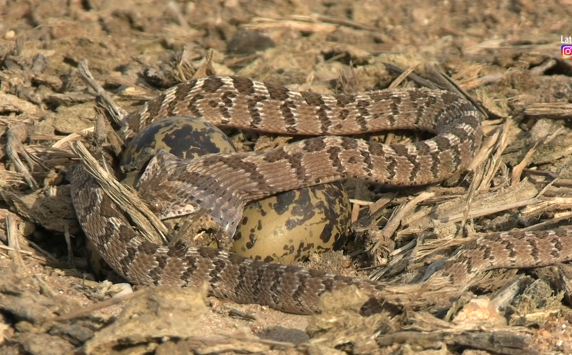
As expected, the birds sensed the impending danger and immediately went into battle mode. At the same time, the flock of birds continuously attacked the intruder. However, the snake proved to be extremely cunning and stubborn. Not only that, with its speed and agility, the snake not only dodged the onslaught of attacks but also caught one of the eggs in the nest.
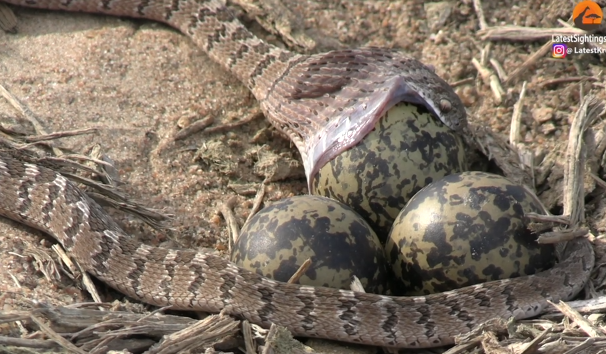

The snake immediately performed a special technique and swallowed the entire trophy in its mouth. The whole exciting moment was filmed by Frank’s lens.
The ability to swallow prey many times their size is one of the extremely unique features of snakes. Research by scientists shows that snakes use a specialized group of bones, ligaments, and muscles in the skull to open their jaws as wide as possible, which helps them hunt prey much larger than their own size. It is the jaw opening that sets the limit on the size of prey the snake can eat.
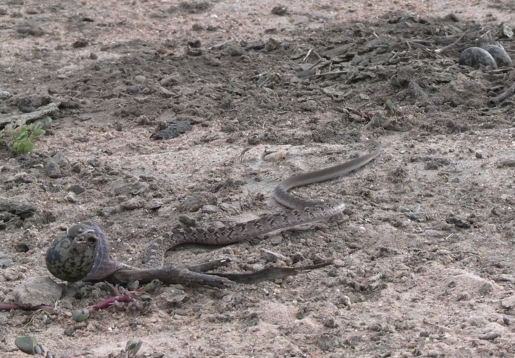
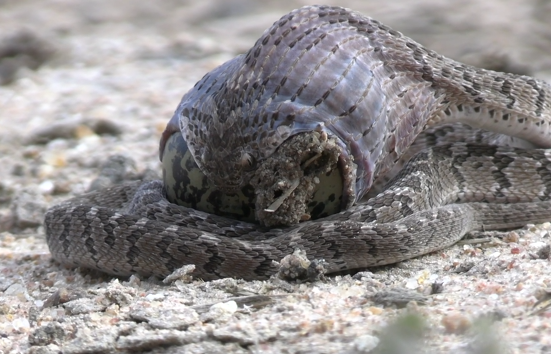
The super-stretchy skin between their lower jaws allows them to swallow even larger animals than their movable jaws alone would allow. Unlike the lower jaws of humans and other mammals, snakes’ lower jaws aren’t fused together, but are loosely connected to an elastic ligament, allowing their mouths to open wider. After grabbing the prey and swallowing it whole, the next step is for the snake to push the prey along the digestive tract. Stomach fluid helps snakes break down tissue. When eating small prey, snakes can use their jaws to push worms or mice down the digestive tract. But with a large meal, snakes use their head and jaw bones to push their prey down into their stomachs.

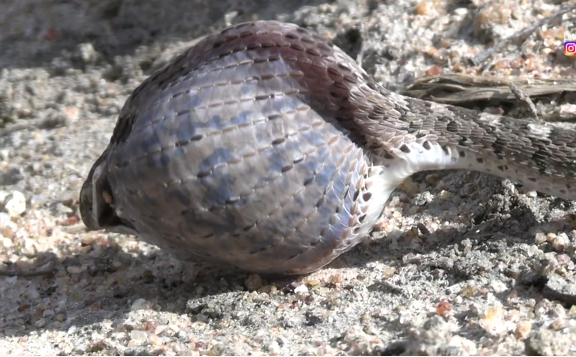
After finding food, the snake quickly disappeared into the bushes, leaving the birds in infinite sadness.




